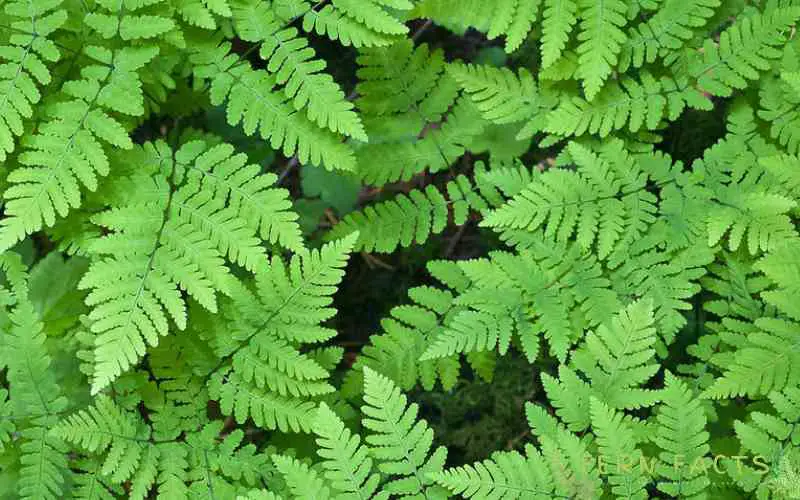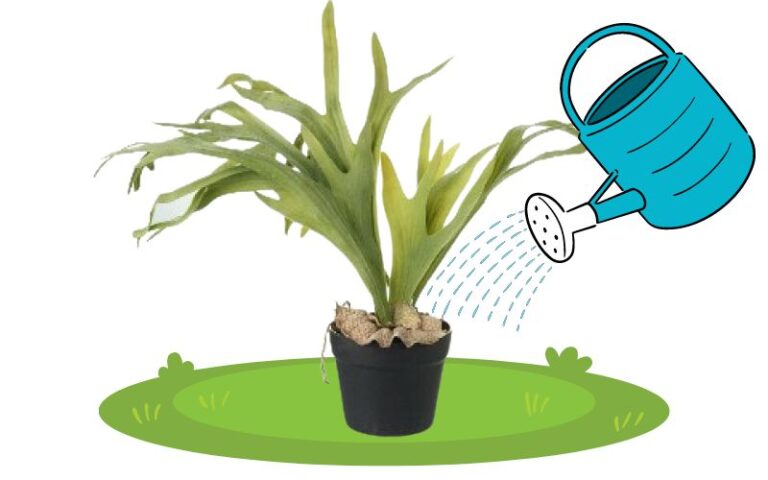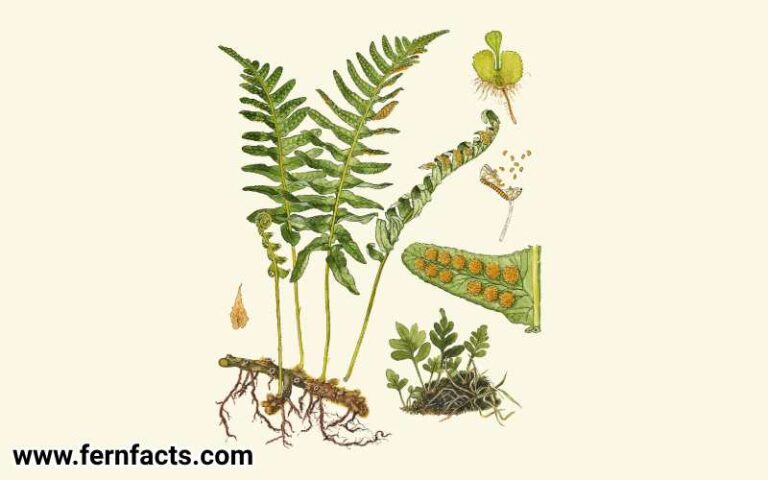How to Grow and Care for Oak Fern Plants
Do you want to have shade-loving fern for your garden? Then, Oak ferns would be a great option for you to have.
These Oak ferns are perennial deciduous plants whose triangular-shaped fronds give a mesmerizing view.
If you want to know more about this triangular-shaped frond fern, then go through this article. In this article, I’ll be illustrating an inclusive idea about Oak ferns and their characteristics.
In addition, I’ll also talk about their growing and caring tips with you so that you can easily plant these ferns at your house. So let’s start with an overview of Oak fern’s characteristics.
Overview of Oak Fern
- Botanical name: Gymnocarpium dryopteris
- Common name: Oak fern, western oak ferns, Northern oak fern, common oak ferns
- Family: Cystopteridaceae
- Plants: Deciduous plant
- Native range: North America, Eurasia
- Native habitats: moist wet shady forest,
- Shade requirements: full or partial
- Height: 6 to 12 inches
- Soil pH: acidic, neutral, alkaline, clay, sandy (4.5 to 6.4 soil pH)
- Soil type: rich-humus, moist well-drained
- Hardiness zone: 2,3,4,5,6,7,8
- Tolerant: cold tolerance
Oak ferns are deciduous seedless vascular plants that are widely native to North America and Eurasia (Europe and Asia) countries.
They are also known as common oak ferns, northern oak ferns, and western oak ferns in different regions. In recent days, they have also been found in Canada, China, the US, Japan, Korea, and Russia.
As it’s a vascular plant, they don’t have any seeds or flowers. They are generated via spores within their two life cycle which are the sporophyte phase and gametophyte phase.
Their triangular-shaped fronds are mostly pale green to deep green in color which portrays an amazing contrast in the deep forests.
Apart from their native regions, these oak ferns thrive in moist shady places. Similarly, they are also well tolerable in wet soil and humid conditions as long as they get loamy, sandy, clay, and acidic soil.
Their tolerable pH level is between 4.5 to 6.4. Like most other ferns, they also got an RHS (Royal Horticultural Society) garden merit award due to the fact of their unique wet soil tolerance.
However, they also have the adaptability to tolerate extremely cold weather since they belong to the hardy zone from 2 to 8.

Oak Fern Care and Growing Tips
If you want to grow this oak fern in your house, then you have to give it its ideal condition. Let’s look at their basic ideal conditions.
Light
In native forests, Oak ferns usually prefer deep shade. So you can place them under a fully shaded place. However, they can also do moderately well in dappled shade as well.
So try to place them inside of your house where they can get deep shade. You can also plant them outside under a full shaded area so that no sunlight can reach out to your plant.
Even during the summer seasons, there is more chance of having this fern sunburn due to excessive sun rays.
So you might have to give extra care during summer times. Just place them in a corner of your room, where they don’t get touched by sunlight.
Water
As they are wet soil tolerable ferns, they enjoy wet soil conditions. It means their preferred soil would be damp, moist, and wet soil.
Hence water them once or twice a week to remain damp in the soil. Since they can tolerate wet soil, you can plant them near any poolside of your garden. They will get moisture and water naturally from there.
Soil
Oak ferns prefer acidic, neutral soil along with a pH level of 4.5 to 6.4. Besides, they can also do good in sandy, loamy, clay soils. Just make sure the soil is well drained enough.
Though they can tolerate wet soil, standing water might be dangerous for them. It can cause your oak ferns to have root rot as well.
So, all these rich humus soils will balance the soil texture and make the soil well-drained. Thus, soil will balance moisture and nutrient levels in it.
Temperature and Humidity
Oak ferns prefer cooler temperatures as they are 2 to 8 hardiness plants. They prefer deep shade with a cooler climate zone. Hereby, their ideal temperature would be between 32°F to 90°F or 0 to 32°C.
If the temperature increases to 32°C, then they might not be able to survive in that warm climate. Hence, try to provide them with cooler temperatures in order to have a thriving plant.
Oak Fern Propagation Method
Since they are seedless vascular plants, you can propagate this fern via spores. Also, you can use the division method to separate them. Let’s go through this process in detail.
Spores Collection
Spores collection is quite a lengthy process to do. That is why you need to do this process very cautiously and patiently.
So first, choose your mature plants that have spores underneath. Usually, it takes a few years (2-3 years) to become mature for any plant. So take your mature plant and check whether the plant has ripe spores underneath or not.
Then Take any white paper to collect the spores from underneath the fronds. Keep the paper aside for a few minutes. Now prepare the soil for planting. Make sure you prepare rich humus soil with organic compost, sand, loam, clay, etc.
Fill the container half with your new soil mixture. Later on, spread the spores on the surface of the new soil and slightly cover them with soil.
Later water the soil surface or mist the surface level. Try to keep the soil moist until you see any growth. Usually, it will take 4 to 5 weeks to grow. After a couple of weeks, you can see the new growth.
Later on, you can transfer new young shoots into a pot and follow the basic requirements.
Explore Further on Caring for and Cultivating Peacock Fern.
Root Division
For doing this process early spring or fall would be the perfect time to do division. During the early spring seasons, take your chosen plant and loosen the soil from the pot.
Later remove your plant gently from the pot. Then, dust off the soil from the plant and rinse it with water. After rinsing, divide the plants by their roots with your pruning tools.
You can also use your hand to divide the plant. Just ensure each part has the same sort of roots. Then replant each segment into a pot or in your garden land with a new soil mixture.
For mixing the soil, again you need to prepare rich humus soil. It will moderately help your fern’s growth. Lastly, water the plants thoroughly to sustain the hydration in your plant.
Complementary Plant for Oak Ferns
Oak ferns are deciduous plants which means these ferns will not last long as evergreen throughout the years. It will lose its green foliage during the winter seasons.
However, Oak fern’s triangular-shaped pale green foliage will give your garden a phenomenal look. Equally, you can enhance your garden appearance by planting other flowering plants such as Jacob’s ladder, Virginia bluebells, trillium, pulpit, etc.
All these plants will give a contrasting view to your deciduous oak fern. Similarly, you can also decorate these ferns beside a pool or lake side in your garden. Because of its wet soil tolerance, these Oak ferns will do fabulous near watery places.
Recap
In final thought, Oak ferns are perennial deciduous plants with their beauty. Although they will lose their beauty during winter seasons and bounce back again during growing seasons.
Still, these ferns are one of the ornamental plants to grow. You can create a unique landscape visionary with Oak ferns because of their wet soil adaptability.
Also, you can design them near a poolside or create a waterfall-illuminating view. Thus, by giving them their basic ideal condition, you can have flourishing Oak ferns at your house.







